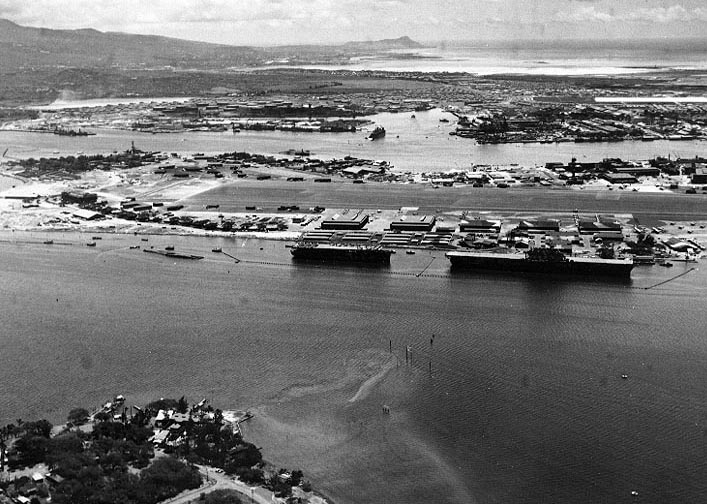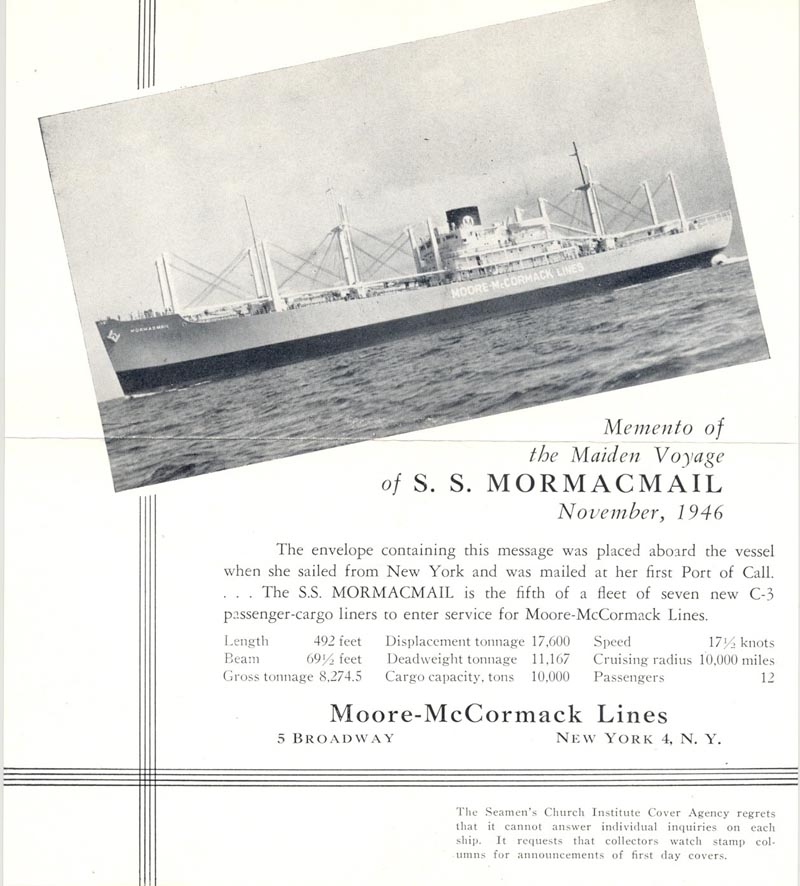Today, the Random Wikipedia Wheel of Fortune sends us to visit the SS Mormacmail. SS Mormacmail actually the name of four different cargo ships built during World War II. The first three of these ships were converted to escort carriers and renamed.
Escort carriers in WWII were typically just normal cargo ships with a flight deck built on top of them. They were slower and had less armor than regular fleet carriers, but they were much less expensive to make. They were used, therefore, mostly as their name suggests, to provide air cover while escorting convoys.
All of which is quite fascinating to me because my father worked on aircraft carriers as an electronic technician when I was growing up. However, he didn’t work on small carriers such as these; he worked on “supercarriers” like the USS Enterprise (CVN-65), the kind of ships that were crown jewels of the fleet. But for every glorious USS Enterprise there are a dozen cheap clunky USS Stargazers, doing the more ordinary work that needs to be done.
* * *
As an aside, I was struck by this sentence I read this morning, linked to by Rod Dreher, written by Anthony Bradley:
For too many Millennials their greatest fear in this life is being an ordinary person with a non-glamorous job, living in the suburbs, and having nothing spectacular to boast about.
Which rather fits the theme that the Random Wikipedia Wheel of Fortune seems to be revealing. We live in a culture which tells us the greatest attribute a human being can possess is fame, and with it, glory. I feel like I have absorbed this message too much myself. It’s an unhealthy mindset to have, because the vast majority of humanity will fail to achieve it, and it will leave you unhappy in the end.
In a healthy culture, we ought to dismiss Fame. Honor, on the other hand, is both virtuous and achievable. We ought to be honoring Honor itself.
* * *
The first SS Mormacmail was purchased by the US Navy in 1941, converted to an escort carrier, and renamed the USS Long Island. Here is a picture of it at Pearl Harbor in August 1942, with the sunken USS Utah to the left, and the larger carrier USS Hornet (CV-8) to the right.

Because so much of the US Pacific fleet was destroyed at the Battle of Pearl Harbor, the USS Long Island was pulled into service in 1942 during the Guadalcanal Campaign. However, once more capable ships had been built, the USS Long Island mostly spent the rest of World War II transporting troops and cargo and operating training missions.
By the way, the Hornet in this picture is not the USS Hornet (CV-12) that currently sits as a museum a few blocks from my home in Alameda, CA where the USS Enterprise and other old nuclear wessels used to dock. The Hornet pictured above was sunk in three months after this photograph was taken in the Battle of the Santa Cruz Islands. The CV-12 was named to honor the CV-8, commissioned a year later in 1943.
* * *
The next two SS Mormacmails were both sold to the British Royal Navy. The first was rechristened the HMS Battler, and the second became the HMS Tracker. The HMS Tracker provided antisubmarine support during the before, during and after the D-Day invasion.
* * *
Finally, a version of the SS Mormacmail was built where the name stuck. It launched in 1946, and served as a cargo vessel until being decommissioned in 1971. It appears to have spent its career shipping cargo between the US, Sweden and South America.

* * *
So it was for all four versions of the SS Mormacmail: not a famous existence, but an honorable one.
